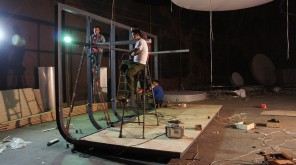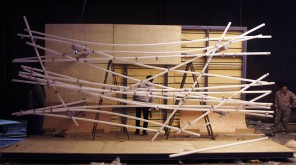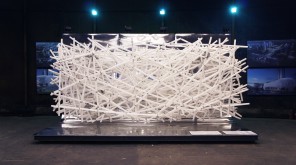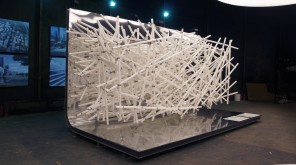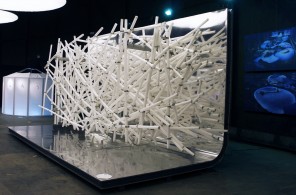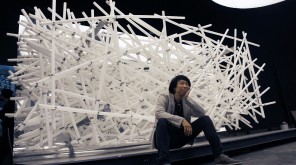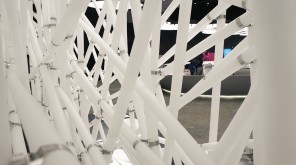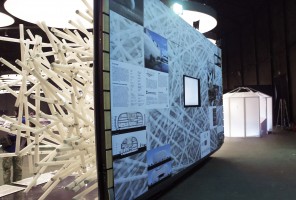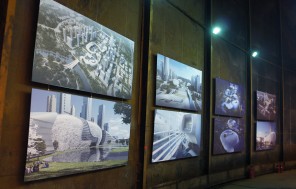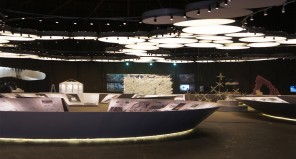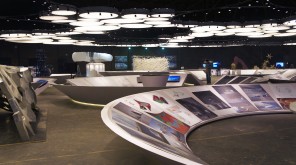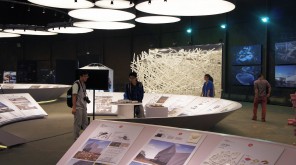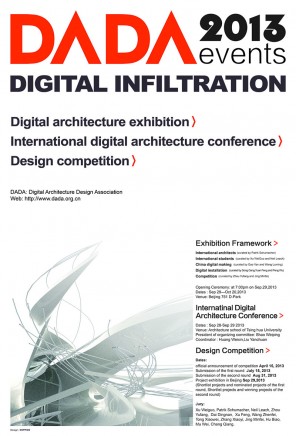DADA Architectural Design and Installation Exhibition
Beijing, China
September, 2013
Under the theme of "Digital Infiltration", the DADA 2013 series of events are all about digital design. Organized by the Digital Architecture Design Association (DADA), it contains the Architectural Design and Installation Exhibition, the Digital Architectural Design Competition, and the DADA International Conference. The exhibition, as a part of the series, was made up of five parts, namely architects' works, students' works, China's digital architecture, digital installations, and competition finalists.
amphibianArc’s installation, named Cocoon, is a 6m × 3m × 4m full-scale partial model extracted from one of amphibianArc’s two public building designs. At the back of the installation's platform structure there is an illustrative board of diagrams, construction drawings and most prominently, a built-in screen at the center showing a documentary film of the installation's entire design and construction process.
This installation demonstrates the feasibility of amphibianArc-designed Yi Chang Museum and Yi Chang Planning Exhibition Center in the historic Chinese city of Yi Chang. The design of these buildings drew inspiration from the shape and structure of silkworm cocoon, as a tribute to the Yi Chang-native Leizu, a legendary Chinese empress who invented and passed on the technique of silk production. While the installation, as a partial model of the real building, resembles the enlarged internal structure of cocoon.
This installation is also an in-depth exploration in the field of parametric design. With an avant-garde parametric design approach, the team successfully managed to associate the project's local cultural element with the broader Chinese history. The Parametric design was done in Grasshopper, a plug-in of Rhino, to generate the desired cocoon form. Meanwhile, the project’s structural Engineer BIAD adjusted the script to ensure that the model is structurally proven. With the help of parametric design, the team was able to rationalize the construction method by identifying the primary and secondary structure, and dividing the entire model into sequential layers, all of which was done in a completely parametric environment.
